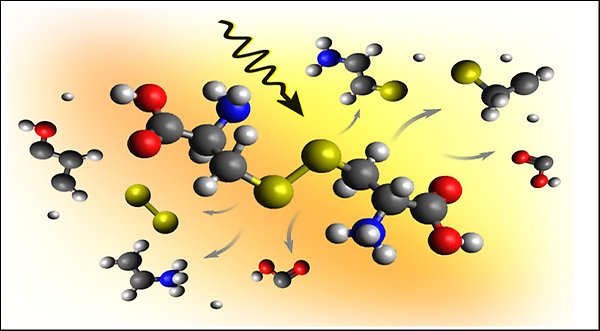Molecules and liquids

Molecules and liquids
Molecules and liquids – Björneholm group
X-ray-induced dynamics of biomolecular model systems to understand the first steps of radiation damage
X-rays are widely used in e.g. medicine, both for diagnostics and for treatment (radiation therapy), as well as in science, e.g. in crystallography. In these applications, radiation damage is either a desired result or an unwanted side effect. On the molecular scale, radiation damage means breaking of bonds and fragmentation. With the aim of understanding the first steps of radiation damage, we explore X-ray-induced electron and nuclear dynamics in biologically relevant molecules and ions. Our approach to address these interconnected molecular-scale processes is to isolate different aspects by using selected types of model systems:
- Studies of gas-phase species to understand the intramolecular x-ray-induced electronic and nuclear dynamics on the low femtosecond timescale, in particular fragmentation without the influence of solvation.
- Studies of small ions in solution to understand the intermolecular charge transfer processes, such as intermolecular Coulombic decay (ICD) and Energy-transfer mediated decay (ETMD), with minimal influence of nuclear dynamics.
- Comparative studies of the same species in gas phase and in solution allow investigations on how the dynamics is modified by the surrounding water molecules.
Environmental molecular science
Atmospheric aerosols partially counteract the greenhouse effect by cooling the Earth via reflection of in-coming solar radiation and promoting cloud formation. According to the UN climate change panel IPCC, the magnitude of these effects is a major uncertainty in climate modelling, and it is crucial to constrain these better. The surface is important for aerosols due to their small size, but surface effects are not generally taken into account in current climate models. To learn about aerosol surfaces, we investigate how the surfaces of aqueous solutions of atmospherically relevant inorganic ions and organic molecules differ from the bulk in terms of composition, concentration and speciation.
Our tools for all these studies are various types of electron, x-ray and ion spectroscopies using x-rays from synchrotron radiation sources and free electron lasers, in combination with theoretical simulations.
Interested? Contact Olle Björneholm

X-ray-induced breaking of a protein-like sulfur bridge in cystine.
Contact
- Programme Professor Chemical and Bio-Molecular Physics
- Philippe Wernet
